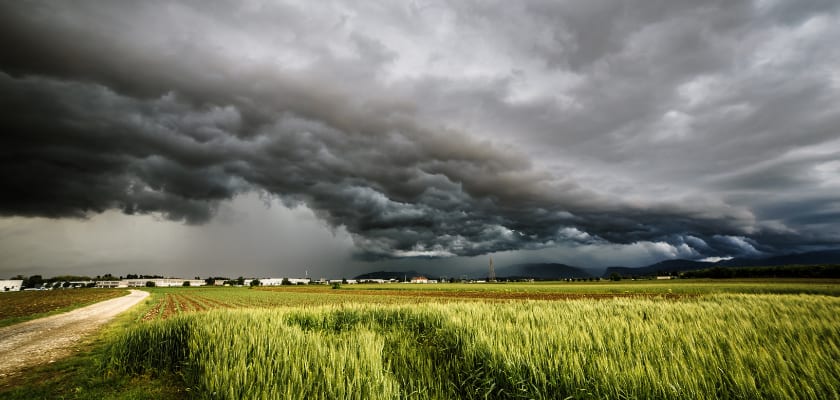Planning for the unexpected: 10 tips to strengthen your dairy farm’s emergency response plan

Originally published in Milk Producer.
While risk and hazard assessments are critical to emergency response planning, the risks of some emergencies are not always thought about on the farm. Increasing phenomena like derechos, tornadoes and forest fires are becoming much more frequent across the province. Unfortunately, these events arrive with very little, if any, advance warning and pose entirely new challenges. These risks are cumulative with everyday emergency possibilities such as equipment entanglement, barn and field fires, animal-induced injuries, and traffic collisions.
While these incidents can’t always be controlled on the farm, they can be planned for, so their impact is minimized. Having a carefully prepared emergency response plan for your farm that is practiced and well-known can be the difference between damage and destruction, or life and death.
10 tips for farm emergency preparedness
- Prepare an emergency contact list for the farm. Every worker and family member should have both an electronic copy of this list and a physical hard copy in their vehicle. Ensure this list has all contact information for workers, family members, nearby neighbours, emergency services, spill and poison control, environmental services, and at least one out of town contact person unlikely to be affected by the emergency. If you have livestock on your farm, you should also include contact information for your veterinarian, at least one livestock transport company, deadstock removal, and any local animal shelters or animal care facilities in your area.
- Assign and train responsibilities to all workers in the event of an emergency. Every worker should have an understanding of their responsibilities during an emergency. Train each worker on at least two of these responsibilities so there is always a backup available if the primary is incapacitated or absent.
- If your farm has livestock, make sure you have sufficient feed on-site for prolonged emergency situations and have plans in place for the moving and care of animals. Panicked animals are unpredictable and having preparations in place ahead of time can reduce the chance of animal and animal-induced injuries during an emergency. First responders are typically not trained to work near farm animals and may be unprepared to deal with them.
- Write down your emergency response plan. In addition to contact and responsibility lists, this written plan should include an up-to-date site map that shows water, power, and fuel sources and shut offs, fire extinguisher, first aid, and spill kit locations. Also include site entrances, access lanes, electric fence locations, manure pits, and chemical storage areas. If you have livestock include herd sizes, locations, and backup shelter areas for the animals. Prepare one of these plans for every property you work on and keep them readily available in a waterproof container clearly marked near the main site entrance so it is accessible to any first responder.
- Provide emergency response training such as first aid or grain rescue for your workers and family members who are on-site. Keep this training up to date and clearly communicate who has what training in your plan.
- Practice your emergency response plans multiple times throughout the year. Ensure you practice for different seasons and conduct dry runs both during the daylight and after dark to identify gaps in your planning. Debrief after these exercises with everyone involved and adjust your emergency plans accordingly.
- Have your local fire department come out and participate in some of your emergency response drills and give them a tour of your facility so they are aware of key points on-site. Give them their own copy of your emergency response plan and provide them with updates as it changes.
- Keep housekeeping up to date on the farm, in, and around buildings. Make sure the access lanes have clear civic address numbers and are kept in good condition. Park equipment so it does not need to be moved out of the way or away from buildings. Keep debris accumulation to a minimum and ensure lighting fixtures are working. Clearly mark any manure lagoons, open trenches, or electric fences so they are visible in poor light or snow-covered conditions.
- Keep appropriate equipment ready for seasonal emergencies. Have tillage equipment hooked up to a tractor for all hay and harvest seasons in the event of a field fire, and snow removal equipment ready to go for the winter. The time it takes to get this equipment ready may be more than you have available during the emergency.
- Determine a fast and reliable way to communicate with workers and family members over the course of the emergency such as PA systems, group texts/chats, or runners providing communication either verbally or with notes. Keep everyone updated at regular intervals throughout the emergency to appraise them of the situation and any changes.
The information in this article is accurate as of its publication date.




